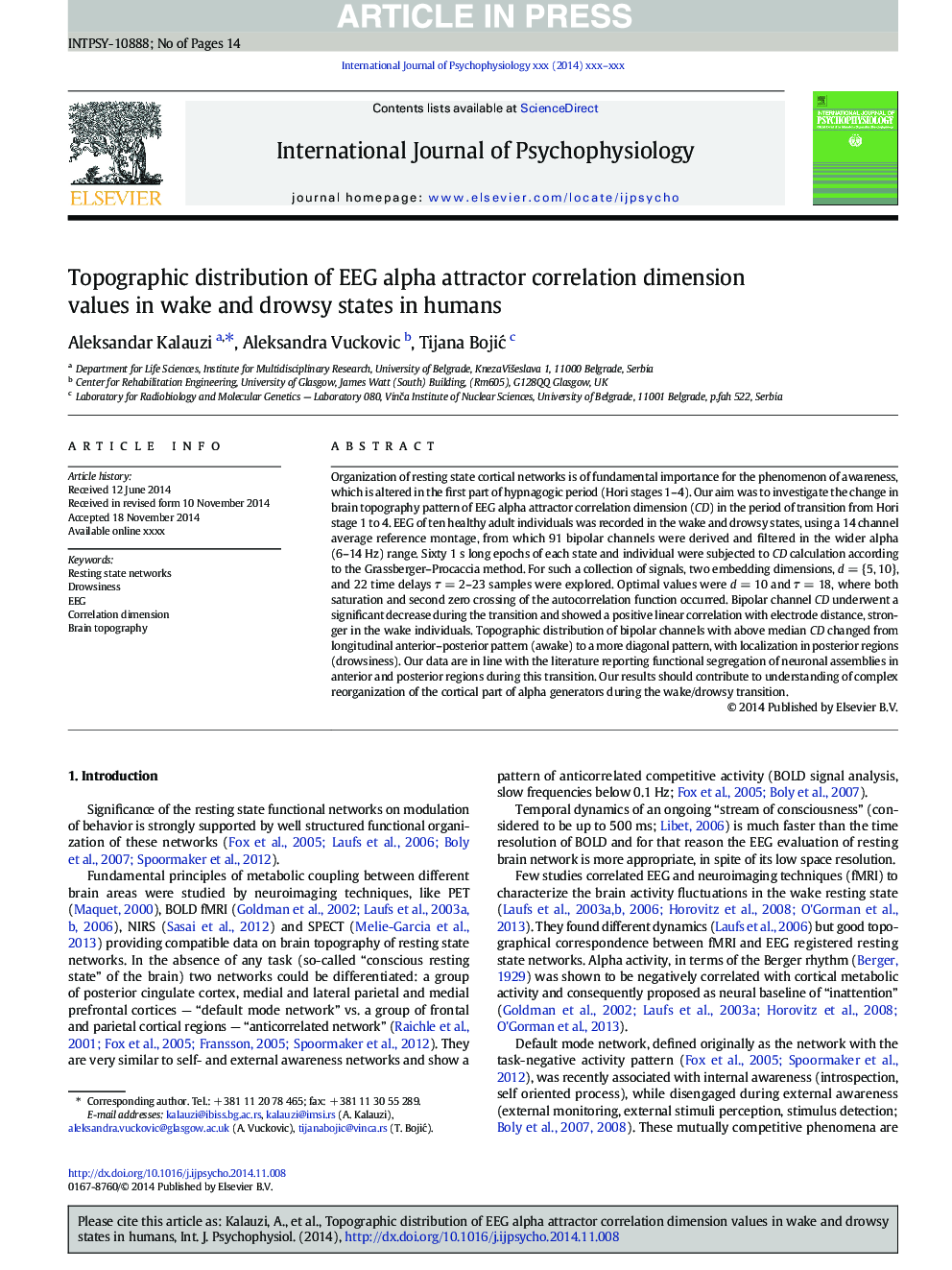| Article ID | Journal | Published Year | Pages | File Type |
|---|---|---|---|---|
| 7295452 | International Journal of Psychophysiology | 2015 | 14 Pages |
Abstract
Organization of resting state cortical networks is of fundamental importance for the phenomenon of awareness, which is altered in the first part of hypnagogic period (Hori stages 1-4). Our aim was to investigate the change in brain topography pattern of EEG alpha attractor correlation dimension (CD) in the period of transition from Hori stage 1 to 4. EEG of ten healthy adult individuals was recorded in the wake and drowsy states, using a 14 channel average reference montage, from which 91 bipolar channels were derived and filtered in the wider alpha (6-14 Hz) range. Sixty 1 s long epochs of each state and individual were subjected to CD calculation according to the Grassberger-Procaccia method. For such a collection of signals, two embedding dimensions, d = {5, 10}, and 22 time delays Ï = 2-23 samples were explored. Optimal values were d = 10 and Ï = 18, where both saturation and second zero crossing of the autocorrelation function occurred. Bipolar channel CD underwent a significant decrease during the transition and showed a positive linear correlation with electrode distance, stronger in the wake individuals. Topographic distribution of bipolar channels with above median CD changed from longitudinal anterior-posterior pattern (awake) to a more diagonal pattern, with localization in posterior regions (drowsiness). Our data are in line with the literature reporting functional segregation of neuronal assemblies in anterior and posterior regions during this transition. Our results should contribute to understanding of complex reorganization of the cortical part of alpha generators during the wake/drowsy transition.
Related Topics
Life Sciences
Neuroscience
Behavioral Neuroscience
Authors
Aleksandar Kalauzi, Aleksandra Vuckovic, Tijana BojiÄ,
